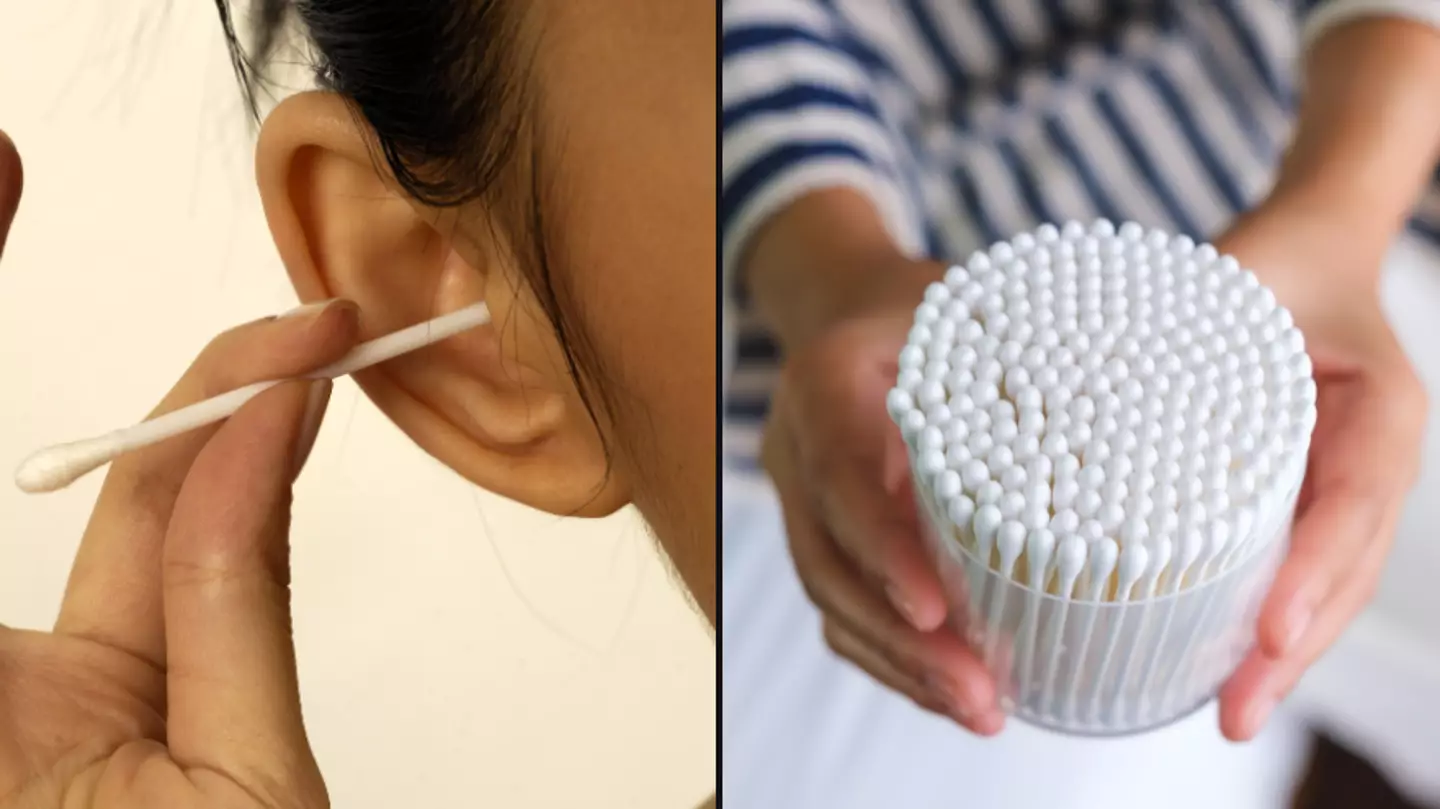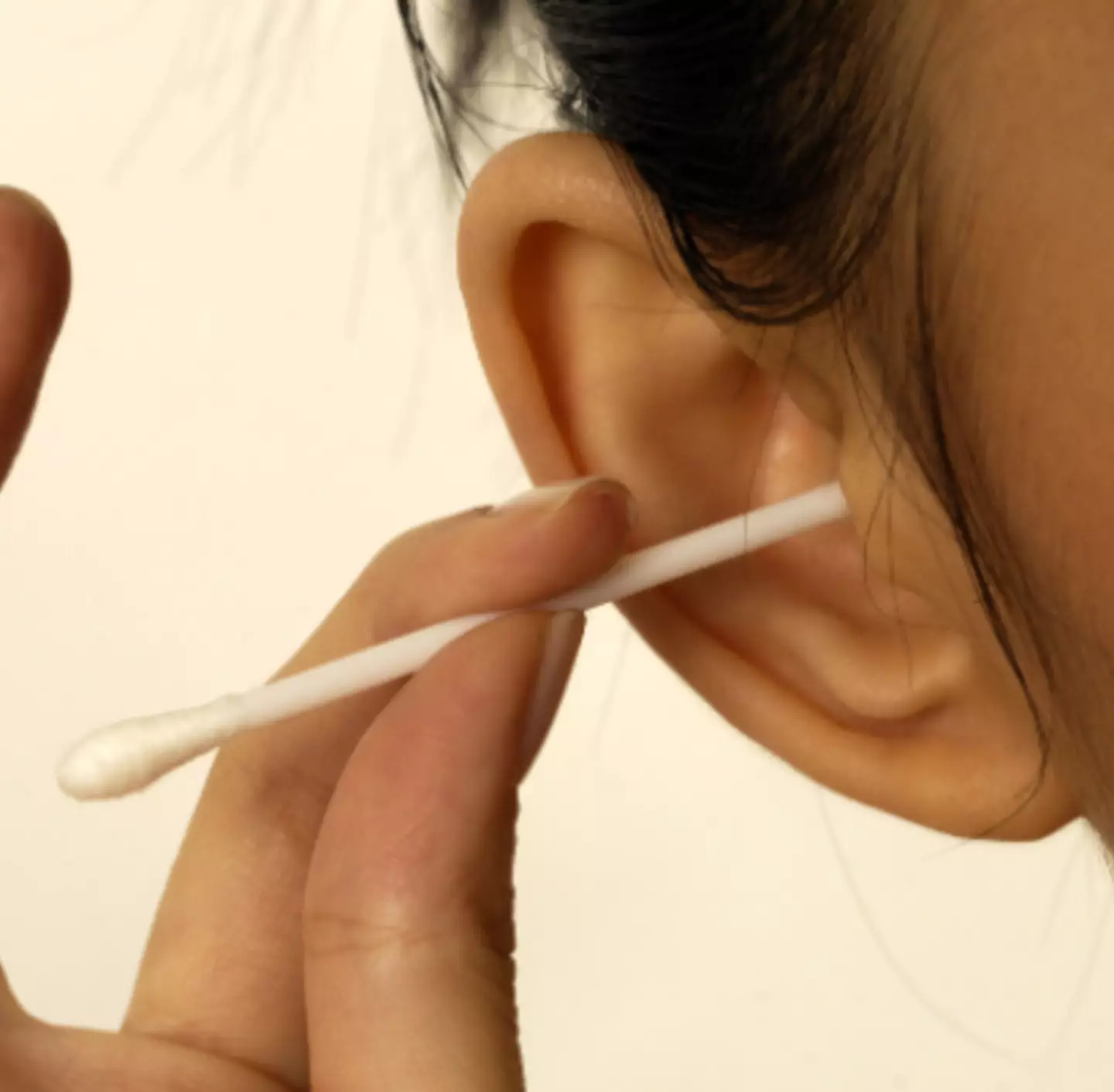
We're all guilty of removing earwax using cotton buds, but an expert has warned why this could be one of the worst things you can do for your ears.
It can be really tempting to stick one of the little buds into your ear to try and get some of the wax out, but it's a huge no-no.
For the most post, earwax doesn't need to be removed as our ears are actually self cleaning, but occasionally people can suffer from a buildup.
This can happen if you have narrow or damaged ear canals; if you have lots of hair in your ear canal; if you have a skin condition affecting your scalp or around your ear, or if you have inflammation within your inner ear.
Advert
But attempting to remove earwax by yourself can actually cause further damage to your ear, or make existing buildup even worse.
Cotton buds are the last thing you should use when you discover earwax buildup, as it could damage your ear canal and in the long-term, lead to hearing loss.
Good news though, as earwax buildup is more common in those nearer to the age of 60 with eczema.
Geriatric specialist Dr Veronika Matutyte from Lithuania spoke to Sun Health about the problems earwax buildup can cause.
Advert
“Earwax, often dismissed as a mere byproduct of our body's natural processes, can serve as a critical indicator of our overall health," she explains.
“It's a window into our body's complex workings and can be a crucial indicator of hidden health issues.
Dr Matutyte has highlighted the three conditions that an earwax buildup could signify:

Lupus
Lupus is an autoimmune disease that can make you feel tired, and patients may develop itchy skin and rashes, as well as joint and muscle pain.
Advert
It could also bring on hair and weight loss, mouth ulcers and swollen glands.
Lupus can cause a buildup of earwax, with the expert saying this can be a signal from the body of a present infection.
Colour, consistency or amount of earwax could change if you have Lupus.
Swimmer's ear
This is also known as otitis externa.
Advert
If you have this, the ear canal swells up and goes red, bringing on a high level pain, potentially leading to a serious ear infection if untreated.
Excessive earwax that may even ooze from the ear is a telling sign of swimmer's ear, and if you spot this you should see your GP.
Bony growths
If you do have swimmer's ear and have excessive earwax, you could also be diagnosed with exostoses or osteomas.
Advert
They are bony growths that often go unnoticed until your hearing or wax impaction changes drastically, Dr Matutyte states.
Doctors may need to carry out a detailed examination if this is the case, which includes potential imaging.

If your ears are blocked, see a pharmacist first who could assist you with finding remedies and cures.
If nothing has changed in more than five days, then you should see a GP.
The NHS advises you to remove earwax from your ears at home by lying on your side with the affected ear up, putting a couple of drops of olive or almond oil (if you are not allergic), continue to lie sideways for five to ten minutes, and repeat this three to four times a day for three to five days.
And again, if nothing changes, see your GP.
Featured Image Credit: Getty Stock Images/Universal Images Group/Getty Images